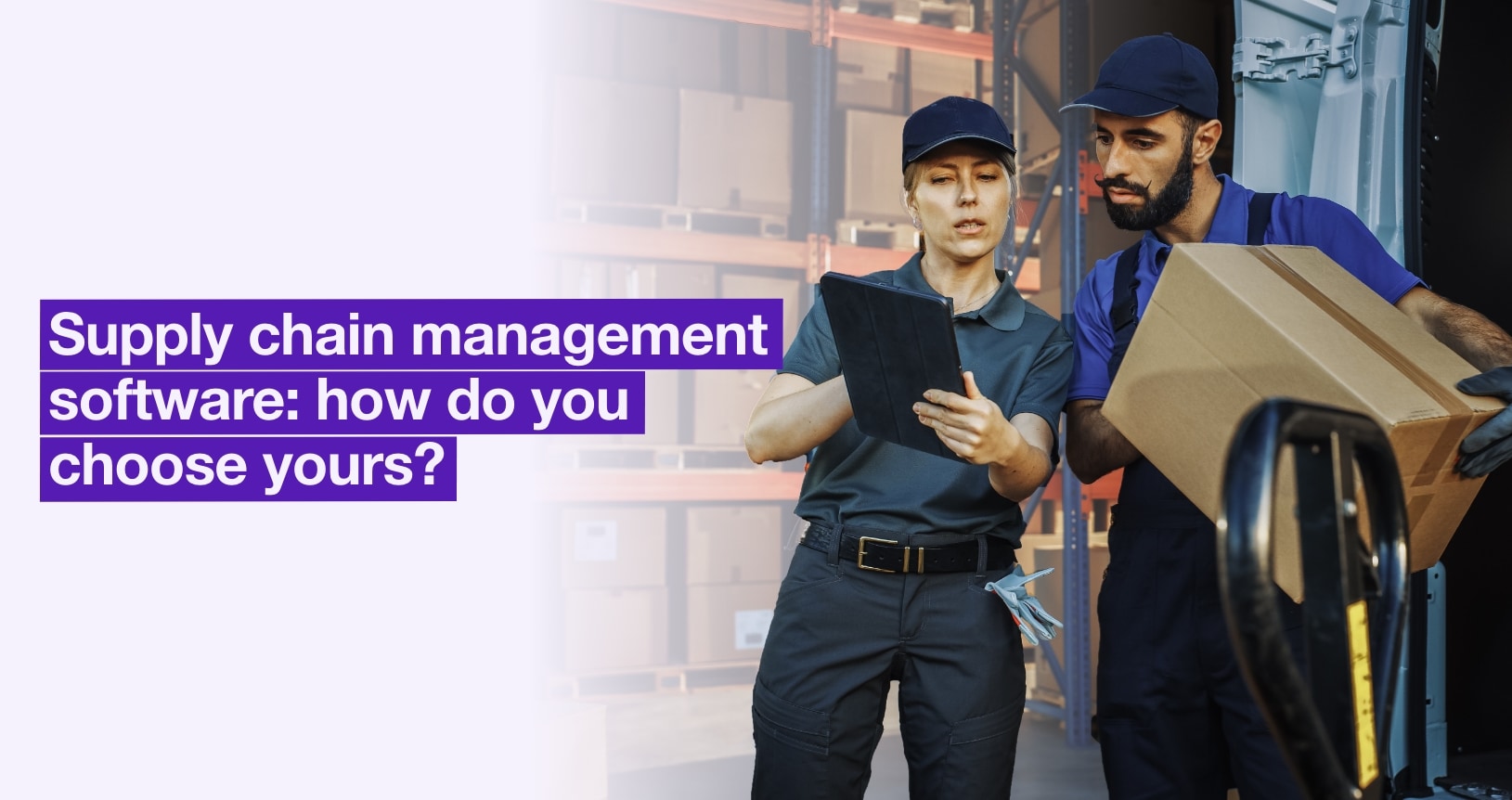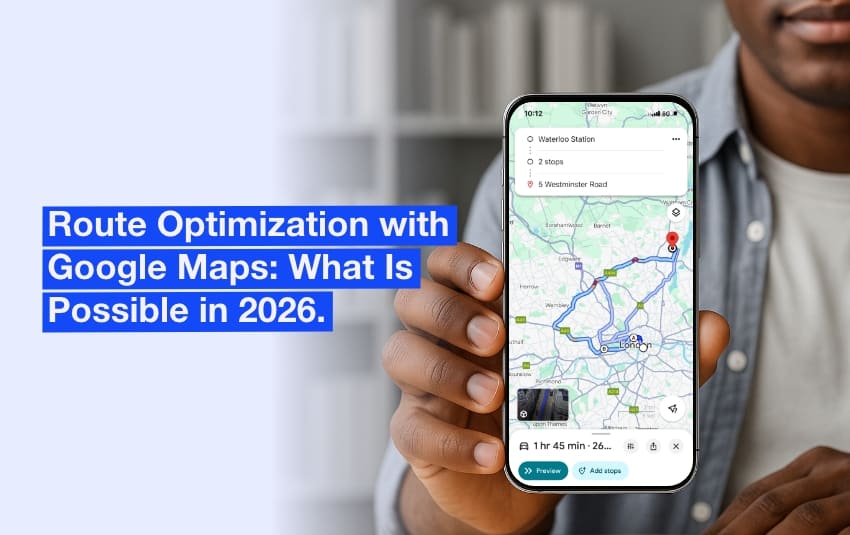The supply chain management software: what you need to know before choosing yours
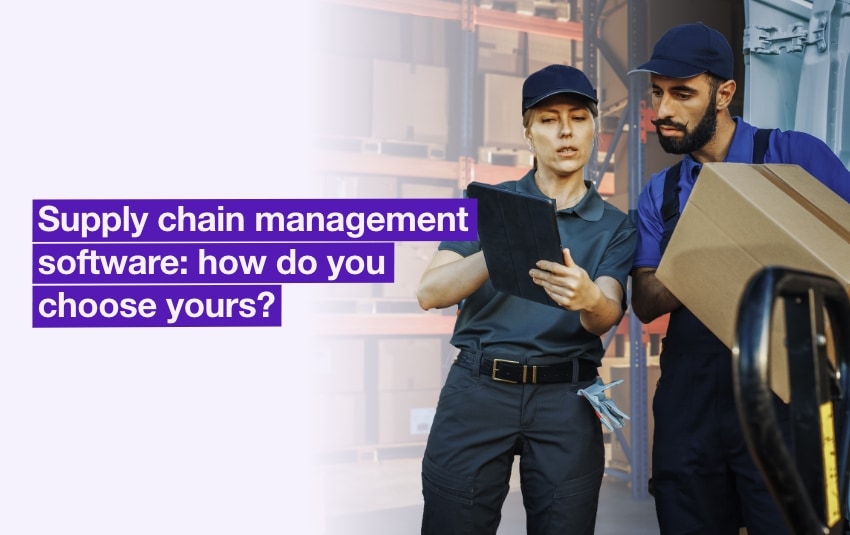
Every logistics manager is looking for efficient solutions to meet growing constraints: high storage costs, tight deadlines, just-in-time delivery, real-time shipment monitoring, etc.
In response to their needs, many business software publishers guarantee better productivity and increased profitability. However, it is important to ensure that the logistics software chosen is suitable for the requirements of your company and the market.
What are the different types of supply chain and transport software? What are the most useful features? And how can you be sure to choose the best one?
Finally, we will present 5 innovative solutions that could revolutionise the supply chain.
Supply chain management software improves the SC performance. The aim of these tools is to centralise information to facilitate cooperation between the stakeholders in the supply chain. For the person in charge of logistics operations, this is a guarantee of better productivity gains and increased profitability.
Table of contents
- What is logistics management software?
- What are the different types of software used in logistics?
- 3 key questions to consider before choosing the logistics software
- 5 innovative software solutions for a more efficient supply chain
What is logistics management software?
Logistics software, or more precisely, supply chain management software, is the term used to describe the solutions which help to improve the performance of the supply chain by digitising some processes.
Depending on the size of the company and its industry, the software can optimise all or part of the operations, from order validation to dispatch to the end customer. For example, these tools can facilitate:
- The management and monitoring of supplies.
- The organisation of stocks in the warehouse.
- The preparation of orders, packing, placing on pallets, etc.
- The tracking of shipments, for both outbound and inbound flows, etc.
All these supply chain management (SCM) software have the same objective: centralise the information to make the cooperation between the actors of the logistic and transport chain smoother.
What are the different types of software used in logistics?
The supply chain software can be classified into two groups:
- The WMS, which simplifies the management of warehouses and stocks.
- The TMS, which focuses on transport optimisation.
This presentation is still quite schematic. Depending on your needs, you can use WMS, TMS, or both. Several software publishers also offer flexible systems, allowing you to choose modules of additional features.
The main features of WMS (Warehouse Management Systems)
The WMS, or warehouse management software, usually has features that are useful for:
- View stock in real time based on variables such as purchase date, expiration date, shelf life, etc.
- Better organise the supply of goods and reduce shortages.
- Improve the productivity of operators (precise mapping of storage areas, order preparation plan, etc.).
- Improve the traceability of products or packages at each stage of the supply chain (barcodes, radio-frequency identification, etc.).
- Reduce the error rate and provide better service through alerts, dashboards, etc.
Some WMS go even further by providing fully automated warehouse management, where robots are used for picking and transporting loads.

Warehouse Management Systems automate the running of warehouses.
The main features of TMS (Transport Management Systems)
The common objective of TMS is to optimise transport, whether it involves deliveries, field service operations or return flows. This software is designed for transporters, of course, but also for all companies which organise themselves the shipment of fresh products, parcels or equipment. Some TMS are also very useful for managing the trips of mobile workforce such as technicians, repair workers, sales people, etc.
The key features of transport software include:
- The optimisation of vehicle loading.
- The scheduling of shipments or routes.
- The geolocation of goods or dispatch riders.
- The centralised management of documents and proof of delivery.
- The solutions to react in real time to unforseen events on the road or at the location of the customer (traffic jams, absences, etc.)
- The analysis and monitoring of performance, etc.
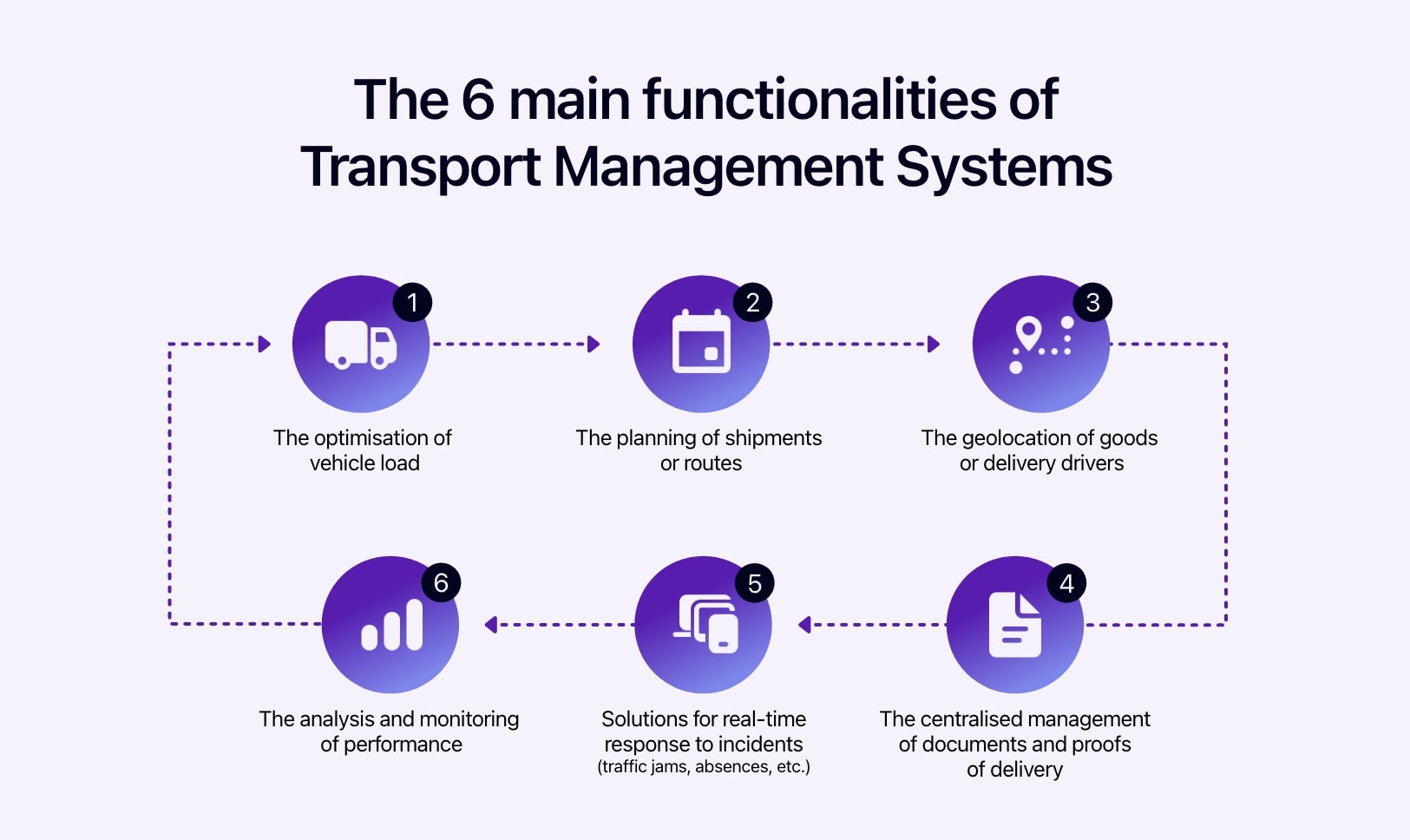
The 6 main functions of a TMS.
3 key questions to consider before choosing the logistics software
To be sure of choosing the best software, it is not enough to test or review the precise list of its features. To avoid disappointment, ask yourself these 3 key questions, which are often overlooked!
Is the software compatible with your other IT tools?
Even if you select the best software in the world, it won’t be very useful if there is no data exchange with the tools you already used (ERP, CRM, invoicing, accounting, etc.).
To improve productivity and avoid time-consuming re-entries, the logistics software must be able to communicate automatically with your other supply chain data tools, as well as with the main solutions of your suppliers and carriers.
The good news is that software publishers offer various solutions such as:
- Exporting the information to a standard file format (Excel, Google Sheets, etc.).
- Electronic data interchange (EDI) systems.
- Specific IT developments such as plugins and APIs, to connect two software or applications easily.
Do you need SaaS or on premise software?
Today, most logistics management software is only available in SaaS mode. In other words, you can access the software or application remotely, from any device connected to the Internet. For users, there are many advantages:
- Highly flexible pricing. You usually subscribe to a monthly plan which varies according to the number of users, and which can easily be increased or decreased.
- No initial investment.
- Hosting, maintenance and development costs are covered by the publisher. In other words, from a technical point of view, when you have access to the Internet, you don’t have to worry about anything!
To guarantee the continuity of their information system at any cost, some companies operating in sensitive sectors such as heavy industry require on-premise version. This means that all data remains hosted by the customer on site. Therefore, this method requires the purchase of operating licences, which are generally quite expensive.
Does the preferred software publisher have other customers in your industry?
Think about visiting the publisher’s website or asking their sales representative for references of other customers. Some software is flexible, while others target more specific issues.
In any case, you should choose a service provider who already works with professionals in your sector. This way, you will benefit from customised responses and more regular specific developments.
<p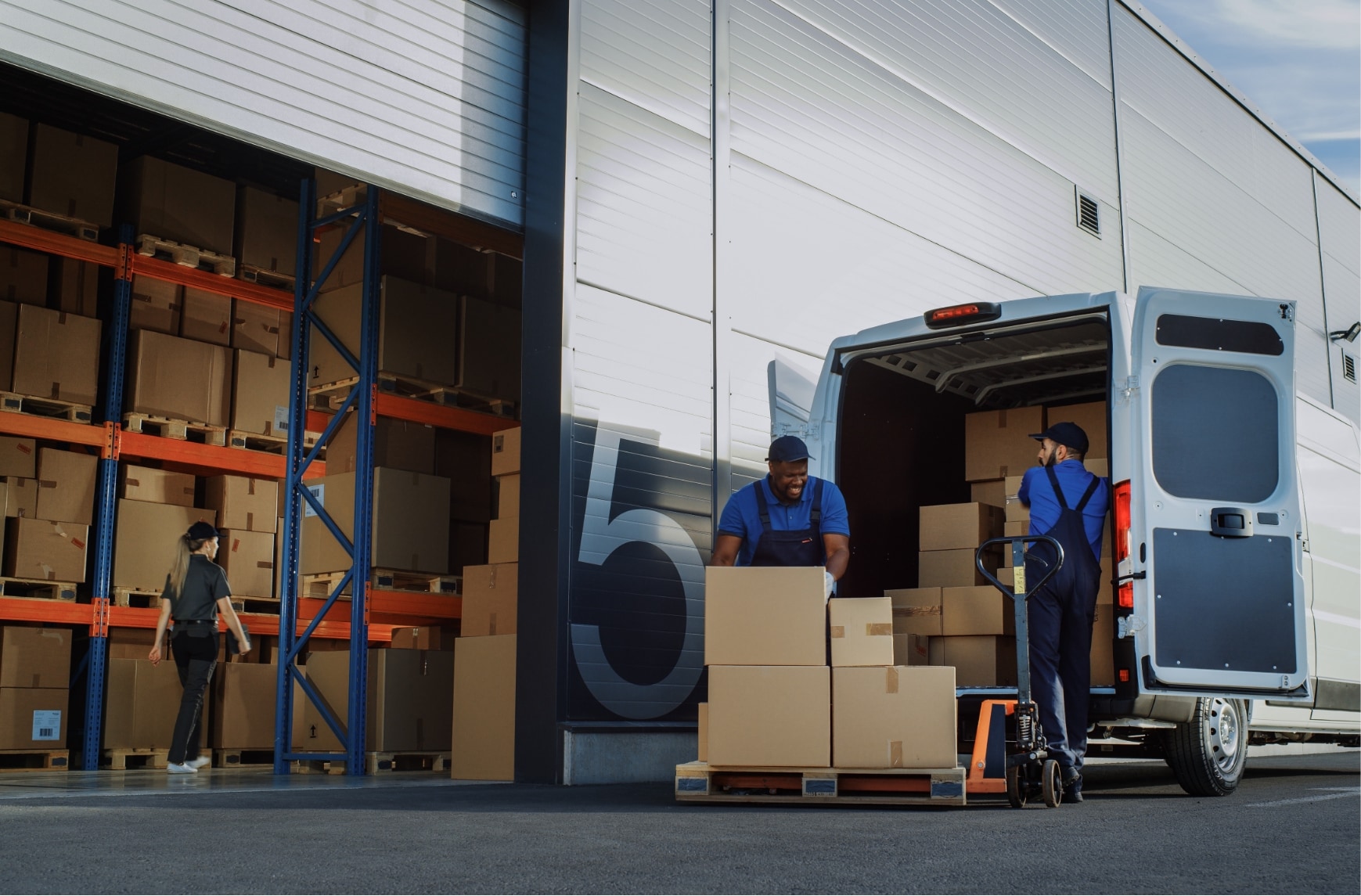
5 innovative software solutions for a more efficient supply chain
Shippingbo
Shippingbo is an all-in-one SaaS solution that integrates and automates the entire logistics flow from A to Z:
- Centralization of all order channels into one tool.
- Real-time management of storage areas, stocks of products and consumables.
- Optimisation of parcel preparation.
- Editing of labels and invoices.
- Allocation of each order to the best carrier.
- Control and monitoring of shipments, etc.
To achieve this, the company has developed a series of programming interfaces, APIs, to connect natively to the IT tools of your suppliers and carriers.
Shippingbo adapts to every size of business, from small e-commerce sites to multi-warehouse logistics professionals.
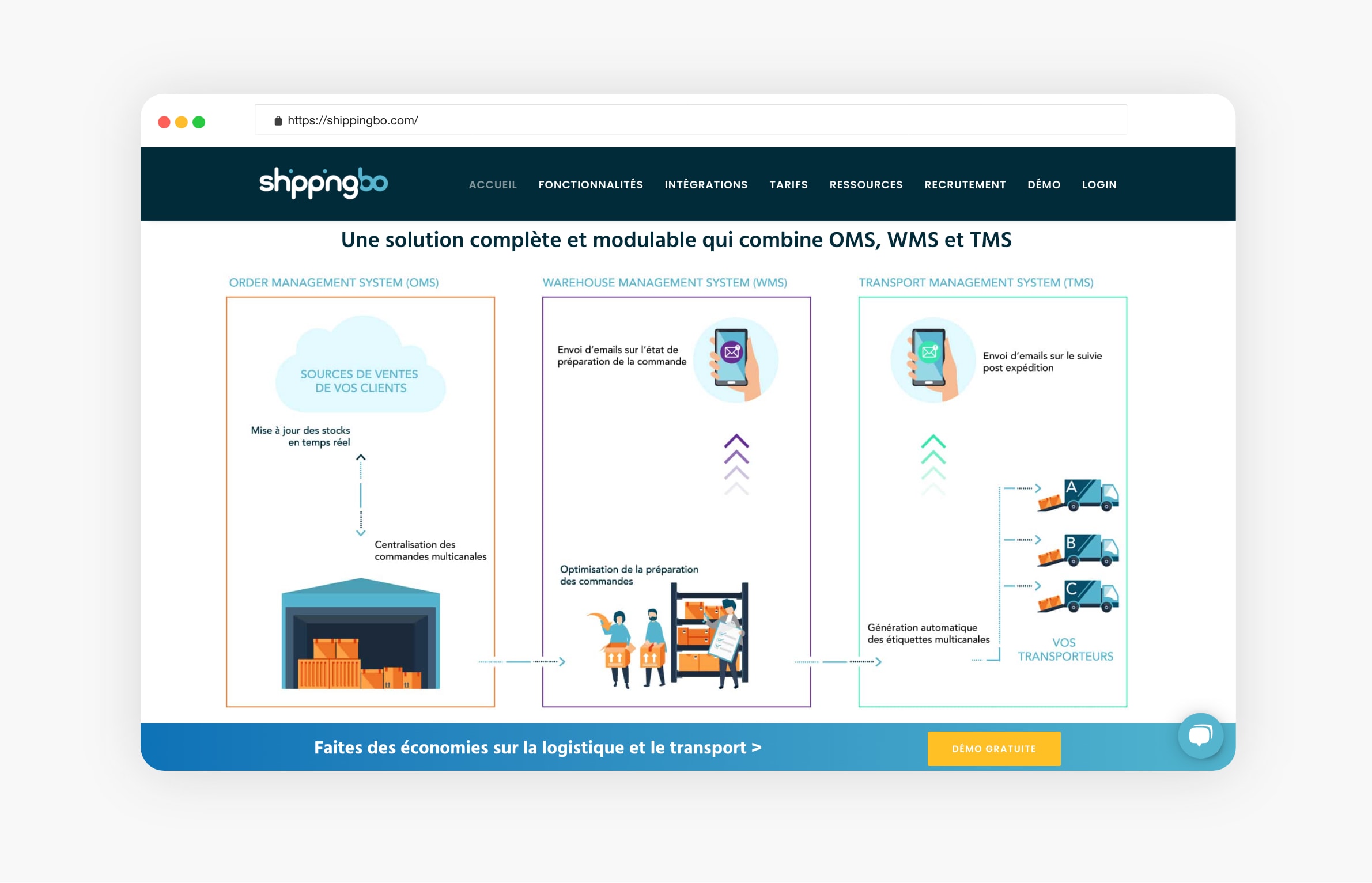
Woop
This start-up based in Lille, France also offers online retailers a SaaS solution to manage their last-mile deliveries at one place:
- Shipping from a warehouse or physical shop.
- Delivery at home or in a relay point.
- Click & collect, etc.
It promises its customers important savings on transport costs, especially thanks to algorithms that assign each order to the most competitive carrier. Woop also includes a tool to get customer reviews.
Several retailers have already adopted this delivery management solution.
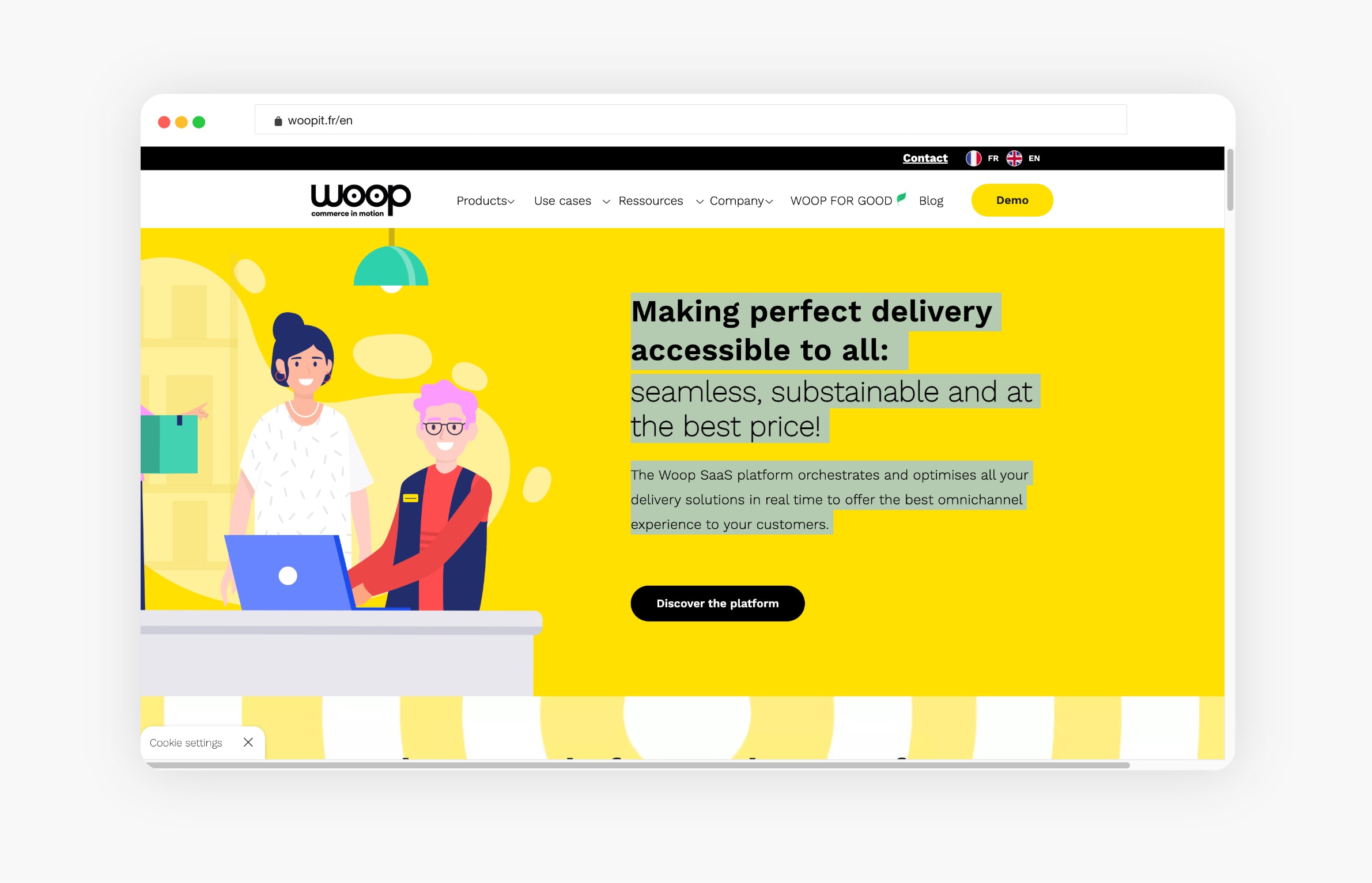
Revers.io
The stated objective of this software, available in SaaS mode, is to optimise reverse logistics. In other words, customer returns, an area which has been little studied until now. Revers.io is designed for:
- pure players who only sell online.
- omnichannel brands, which also have a network of physical shops.
- dropshipping experts and marketplaces sellers.
This platform also innovates by offering web users an interface to manage their returns in complete autonomy. The sellers of course have access to a specific administration portal to monitor the progress of their parcels in Europe and worldwide in real time.
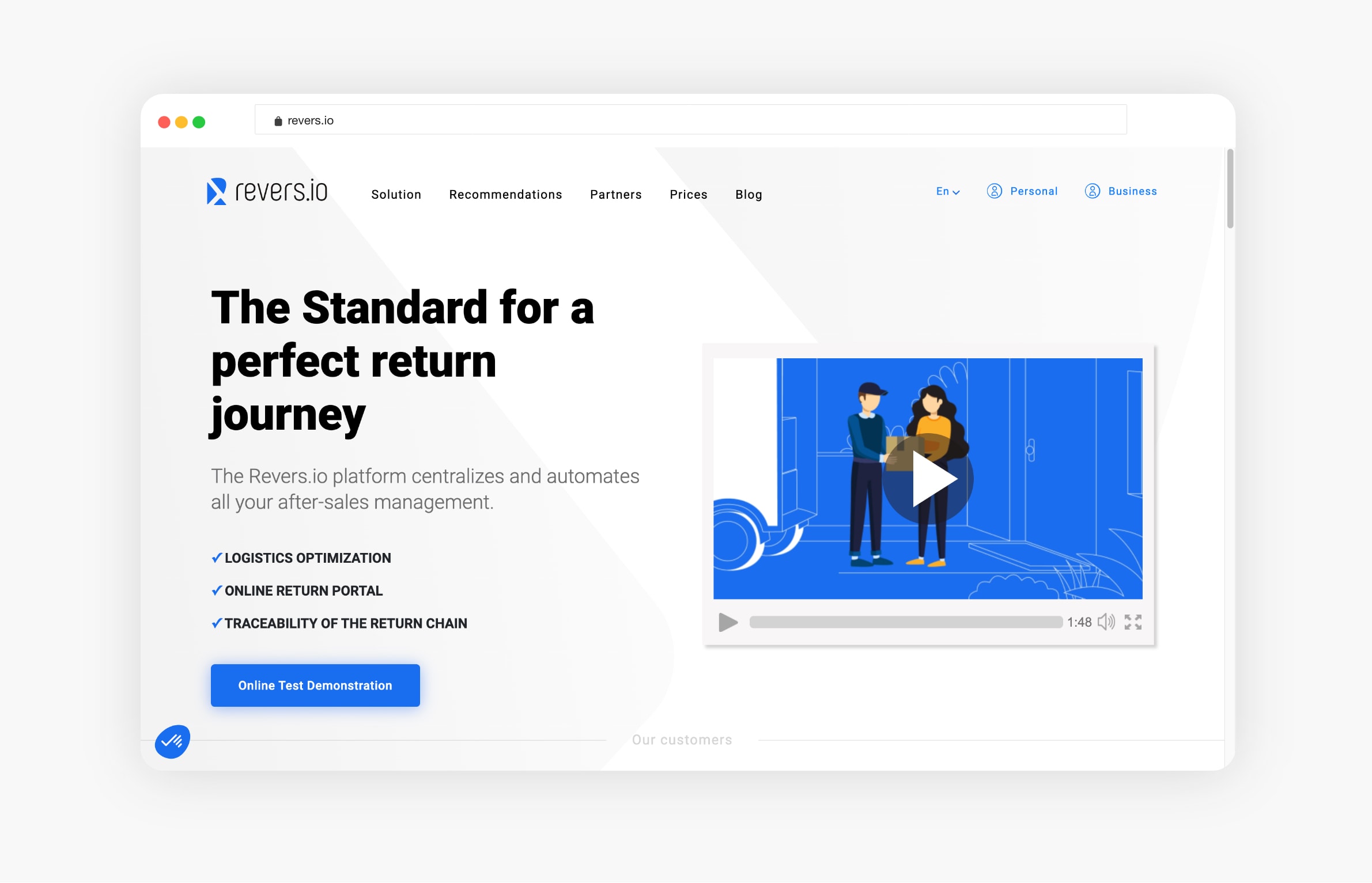
Cubyn
This company offers e-retailers the opportunity to outsource the entire logistics process and focus entirely on the sales.
The contractor sends to Cubyn his stock of products, and Cubyn takes care of everything, from picking to delivery to the end customer… including disputes with transporters!
To guarantee real-time synchronisation of information, the company has developed an in-house API, as well as modules to connect to the main CMS and marketplaces (Shopify, Prestashop, Amazon, Back Market, FNAC-Darty, etc.).
Cubyn, which in 2020 experienced a jump in the value of products transiting through its warehouses from €30 million to €250 million, raised over €35 million the following year.
The next challenge is to manage this exponential growth smoothly.
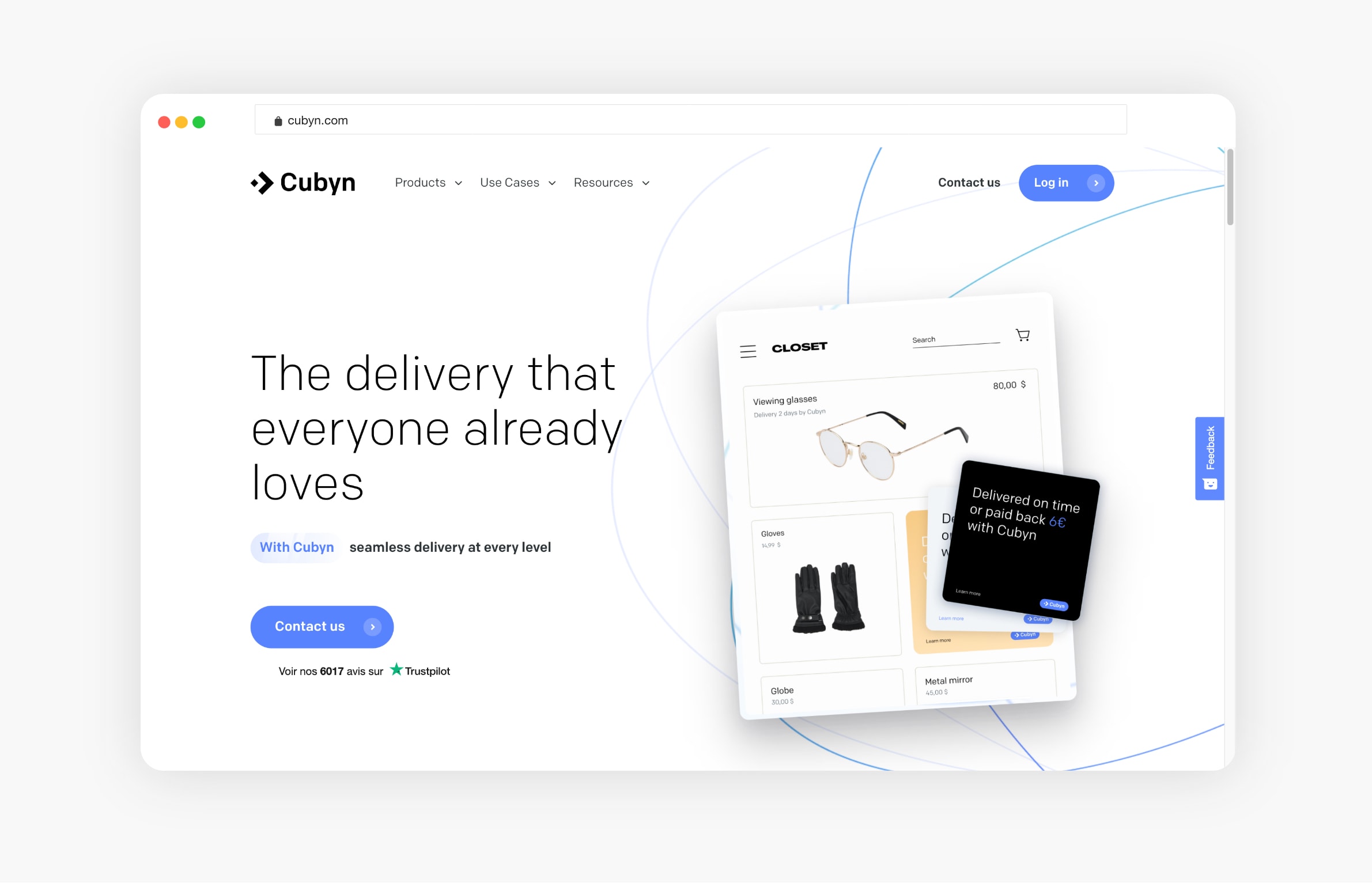
AntsRoute
Our tool, which also belongs to the transport software category, aims to optimise routes and scheduling of deliveries. The AntsRoute application also integrates real-time geolocation, as well as efficient notification systems to improve the customer experience and significantly reduce absences on the first visit.
Many groups and small and medium-sized companies (Fraikin, Leroy Merlin, Electro Dépôt, Madeinmeubles, etc.) are already using our delivery route optimisation system and are operating in different sectors such as:
- Delivery and pickup of goods.
- Installation of equipment.
- Repair and maintenance.
- Maintenance, home care, health, etc.
The AntsRoute users automatically benefits from integrations to easily connect to the most popular applications and ERPs: Prestashop, WooCommerce, Shopify, Odoo, Zapier, etc.
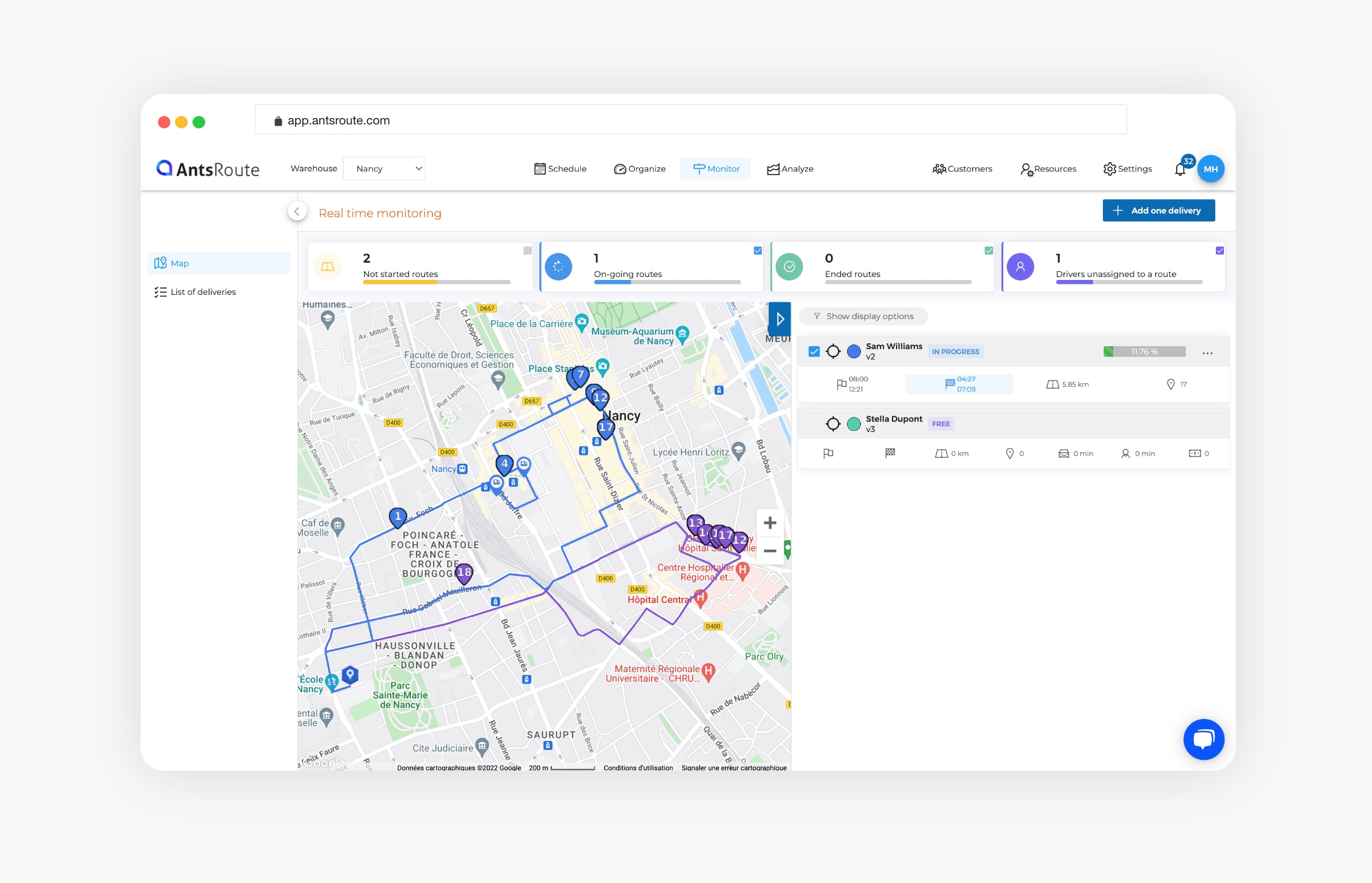
Have you read the AntsRoute customer reviews and want to try our transport software for free during 7 days? Visit this page!
Free 7-day trial | No credit card required
Contenu
- What is logistics management software?
- What are the different types of software used in logistics?
- The main features of WMS (Warehouse Management Systems)
- The main features of TMS (Transport Management Systems)
- 3 key questions to consider before choosing the logistics software
- Is the software compatible with your other IT tools?
- Do you need SaaS or on premise software?
- Does the preferred software publisher have other customers in your industry?
- 5 innovative software solutions for a more efficient supply chain
- Shippingbo
- Woop
- Revers.io
- Cubyn
- AntsRoute

